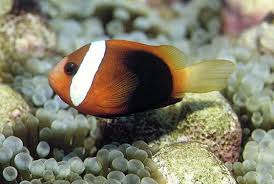Dragons (龙, Lóng) hold a unique and sacred position in Chinese folklore. Unlike the fire-breathing, fearsome dragons of Western legends, Chinese dragons are benevolent, wise, and powerful celestial beings associated with rain, prosperity, and protection. These mythical creatures have appeared in countless folk tales, legends, and historical records, evolving into distinct types with different roles and meanings.

This article explores the various types of dragons in Chinese folklore, uncovering their origins, characteristics, and cultural significance.
1. The Most Powerful and Supreme Dragon: The Tianlong (天龙)
Tianlong: The Celestial Dragon of Heaven
The Tianlong (天龙), or “Celestial Dragon,” is one of the most revered dragons in Chinese mythology. It is said to dwell in the heavens, serving as a guardian of the celestial realm.
- Tianlong is often depicted soaring through the sky, twisting among the clouds, and surrounding heavenly palaces and temples.
- In Buddhist mythology, Tianlong acts as a protector of deities and sacred texts, guarding the gates of heaven.
- Many imperial banners and palace decorations featured Tianlong, symbolizing the emperor’s divine connection to the heavens.
Cultural Significance of Tianlong
- In Chinese imperial traditions, the emperor was often referred to as the “Son of Heaven” (天子, Tiānzǐ), and the Tianlong dragon was a symbol of his supreme rule.
- Ancient temple carvings and religious paintings frequently depicted Tianlong as a celestial being bringing balance to the universe.
2. The Longwang (龙王): The Mighty Dragon Kings
The Four Dragon Kings of the Seas
The Dragon Kings (龙王, Lóngwáng) are among the most famous dragons in Chinese folklore. They are divine rulers of the four seas, controlling rivers, lakes, oceans, and rainfall.
- The East Sea Dragon King (敖广, Áo Guǎng) – The most powerful of the four, ruling the East China Sea and often appearing in legends as a figure who interacts with emperors and heroes.
- The West Sea Dragon King (敖闰, Áo Rùn) – Governs the waters of the western regions, associated with the mystical Kunlun Mountains.
- The South Sea Dragon King (敖钦, Áo Qīn) – Ruler of the warm tropical waters, known for his swift and fierce temper.
- The North Sea Dragon King (敖顺, Áo Shùn) – Guardian of cold and icy waters, often depicted as a wise and elderly dragon.
Legends of the Dragon Kings
One of the most famous stories about the Dragon Kings is the Journey to the West (西游记, Xī Yóu Jì), where the East Sea Dragon King provides the Monkey King (孙悟空, Sūn Wùkōng) with his legendary weapon, the Golden Cudgel (如意金箍棒, Rúyì Jīngū Bàng).
Another legend tells of a great drought, where the people prayed to the Dragon Kings for rain. In response, the Dragon Kings sent life-saving rainstorms, reinforcing their role as bringers of prosperity.
3. The Fucanglong (伏藏龙): The Treasure Guardian Dragon
Fucanglong: Keeper of Hidden Wealth
The Fucanglong (伏藏龙), or “Treasure Dragon,” is a mythical guardian of buried treasures, gems, and imperial riches.
- Fucanglong is said to live deep within the earth, hiding legendary artifacts, lost dynastic wealth, and magical weapons.
- Whenever Fucanglong emerges from its underground lair, volcanoes erupt and mountains tremble, showing its immense power.
- Many ancient emperors and warlords sought the blessings of Fucanglong, believing it could lead them to great fortunes and victories.
Legends of Fucanglong
A famous tale tells of an emperor who buried a golden dragon statue beneath his palace, hoping that Fucanglong would bless his dynasty with eternal prosperity. However, legend says that when the empire collapsed, Fucanglong reclaimed the treasure, causing the palace to sink into the earth.
4. The Dilong (地龙): The Earth Dragon of Rivers and Land
Dilong: The Serpent-Like Earth Dragon
The Dilong (地龙), or “Earth Dragon,” is the ruler of the land, rivers, and underground currents.
- Unlike the celestial Tianlong, Dilong does not fly but slithers through the land.
- It is associated with fertility, agriculture, and controlling water flow, ensuring balance in nature.
- Many ancient Chinese villages worshiped Dilong, believing it could prevent floods and ensure bountiful harvests.
The Role of Dilong in Feng Shui
- In Feng Shui (风水, Fēngshuǐ), the “Dragon Veins” (龙脉, Lóngmài) refer to powerful energy flows beneath the earth, influenced by Dilong.
- Many ancient tombs, including the Ming and Qing imperial mausoleums, were built according to Dilong’s energy lines for luck and harmony.
5. The Yinglong (应龙): The Winged Warrior Dragon
Yinglong: The Dragon of War and Storms
The Yinglong (应龙), or “Responding Dragon,” is one of the rare dragons in Chinese mythology that has wings. It is known as a powerful warrior dragon that helps legendary heroes and emperors in battle.
- Yinglong is believed to have assisted the Yellow Emperor (黄帝, Huáng Dì) in defeating his enemies, including the serpent deity Chi You (蚩尤).
- Ancient Chinese warriors prayed to Yinglong before battles, hoping for strength and victory.
- Some stories say that Yinglong’s mighty wings can summon typhoons and storms, destroying entire armies.
Yinglong in Chinese Art
- Many ancient bronze weapons and armor were engraved with Yinglong, symbolizing protection in war.
- Yinglong was frequently depicted in temple murals, guiding legendary warriors toward righteous victories.
Conclusion
Chinese folklore contains a rich and diverse collection of dragon types, each with unique powers and symbolic meanings. Whether guarding the heavens, ruling the oceans, protecting treasures, or aiding warriors in battle, these dragons have played a crucial role in shaping Chinese culture.
From imperial traditions to folk beliefs, the dragon remains a revered and beloved creature, embodying the values of strength, wisdom, and balance. Even today, in Chinese New Year celebrations, art, and literature, these legendary dragons continue to inspire and captivate people across the world.
Which dragon is your favorite? Let us know in the comments!

Leave a Reply